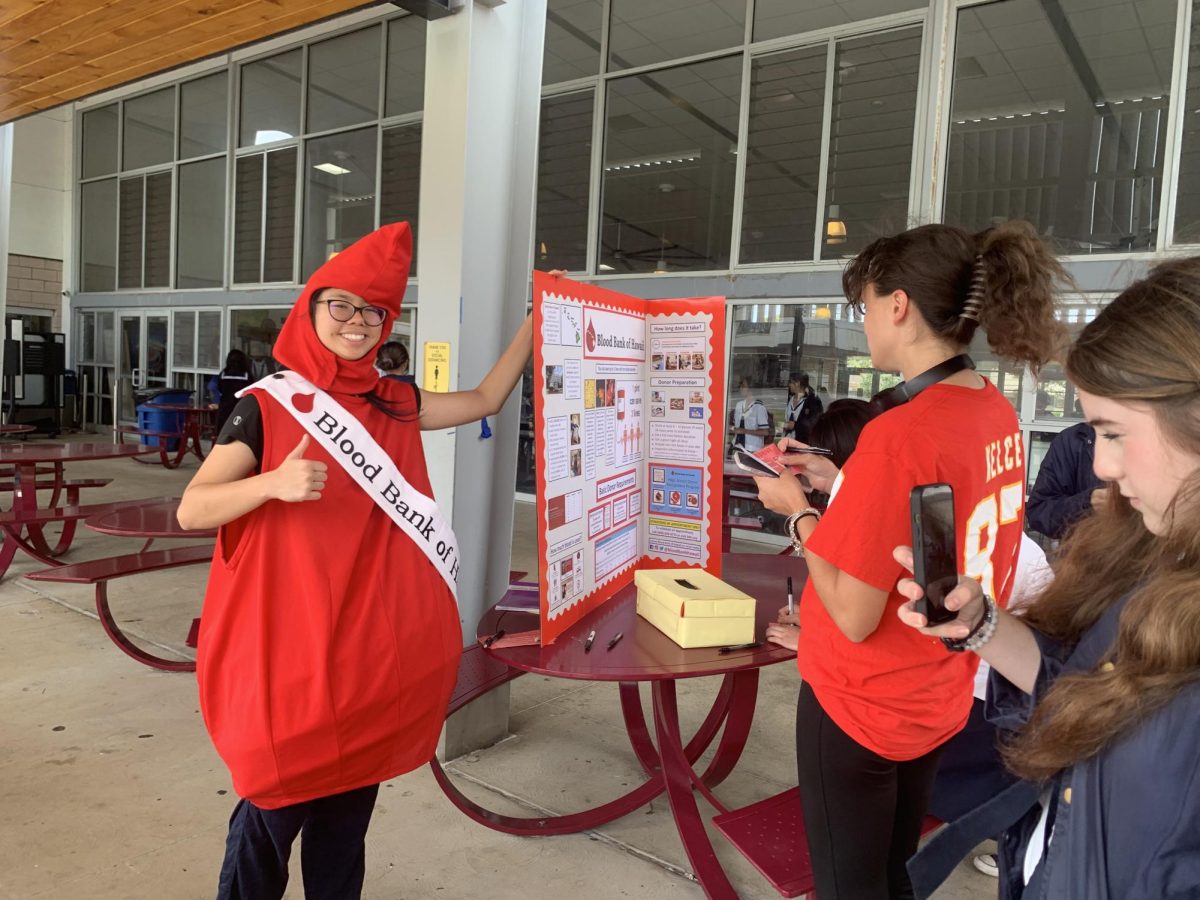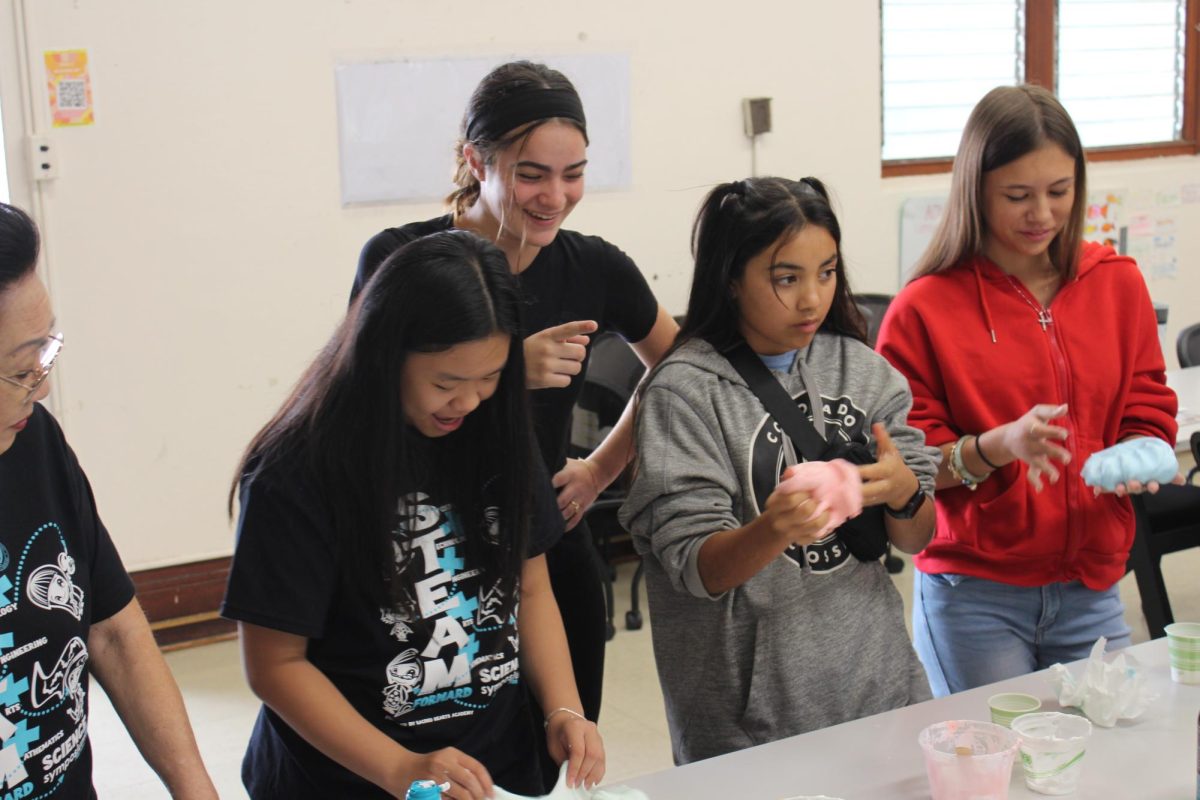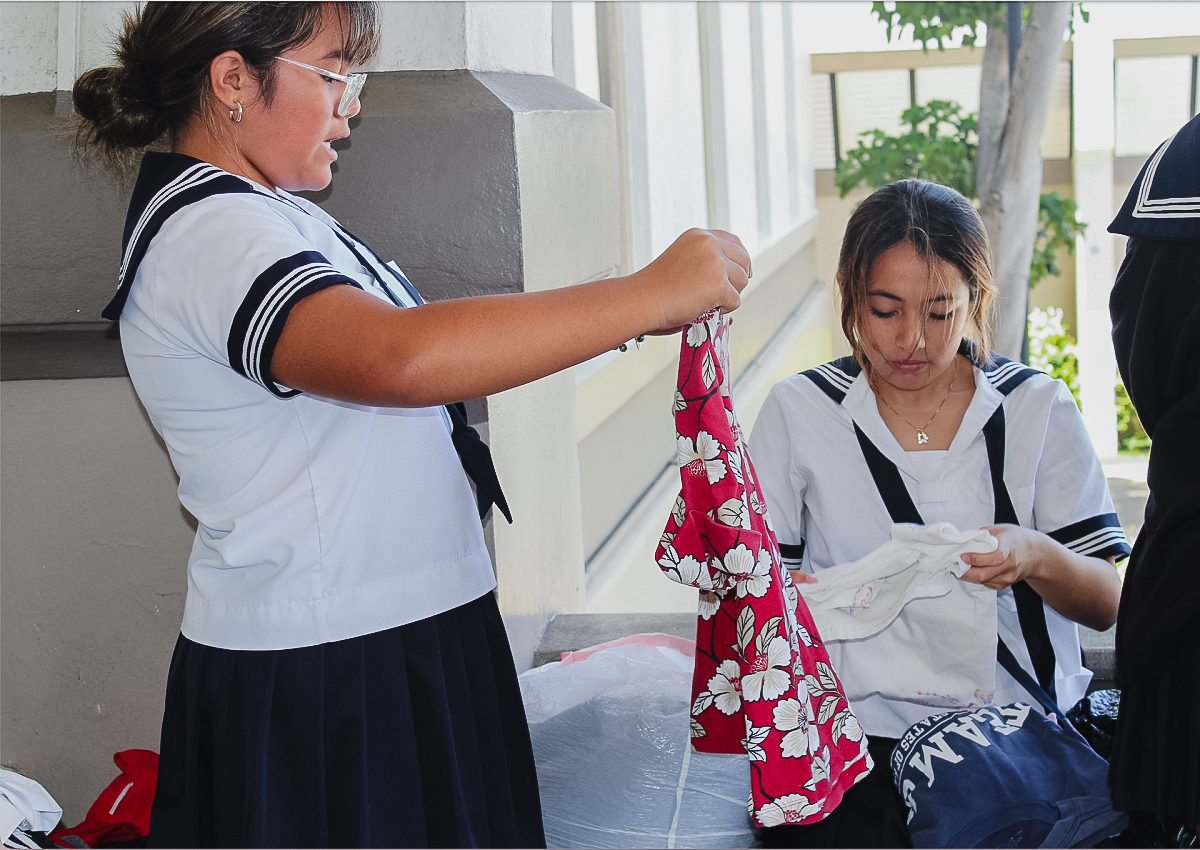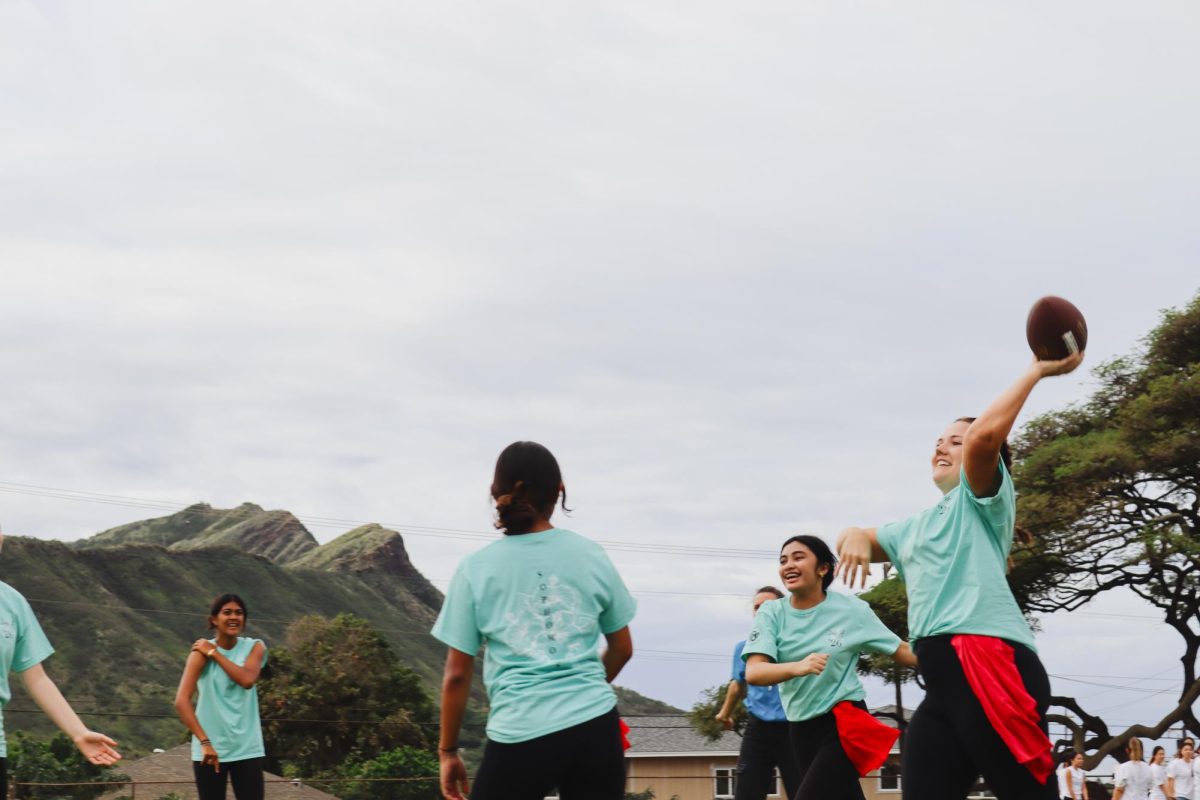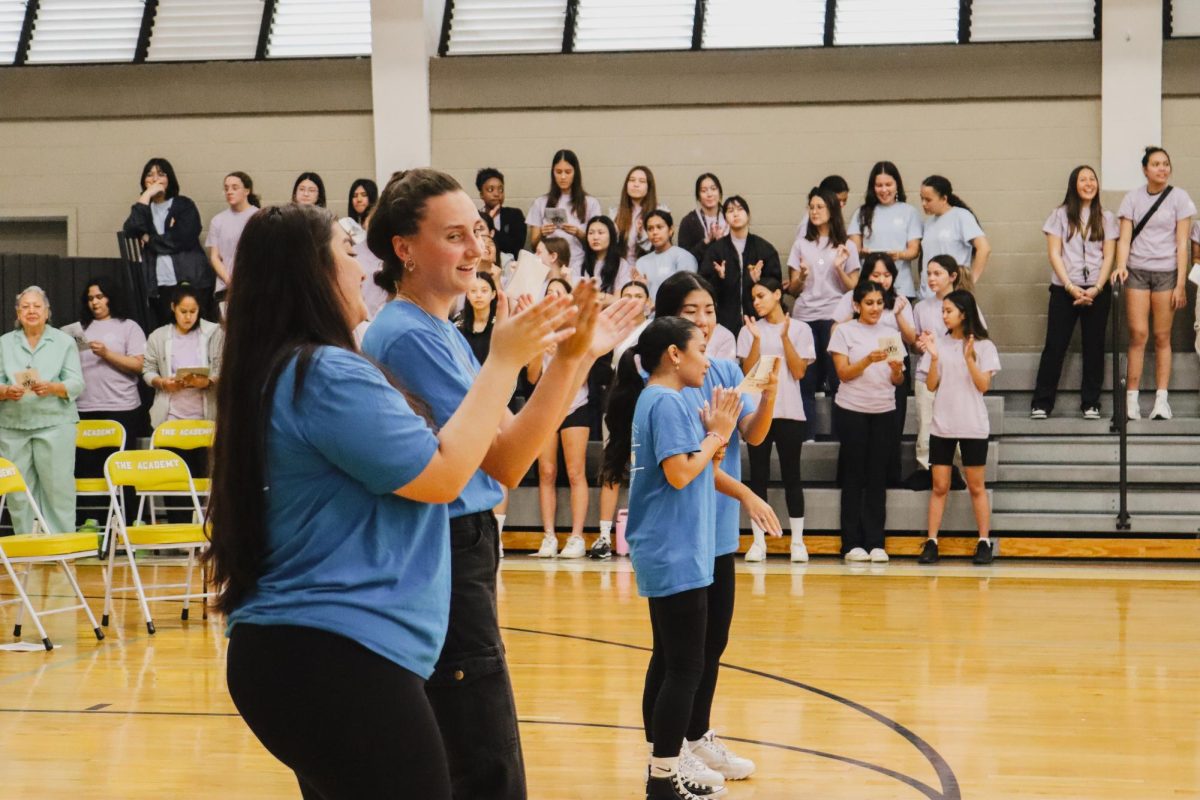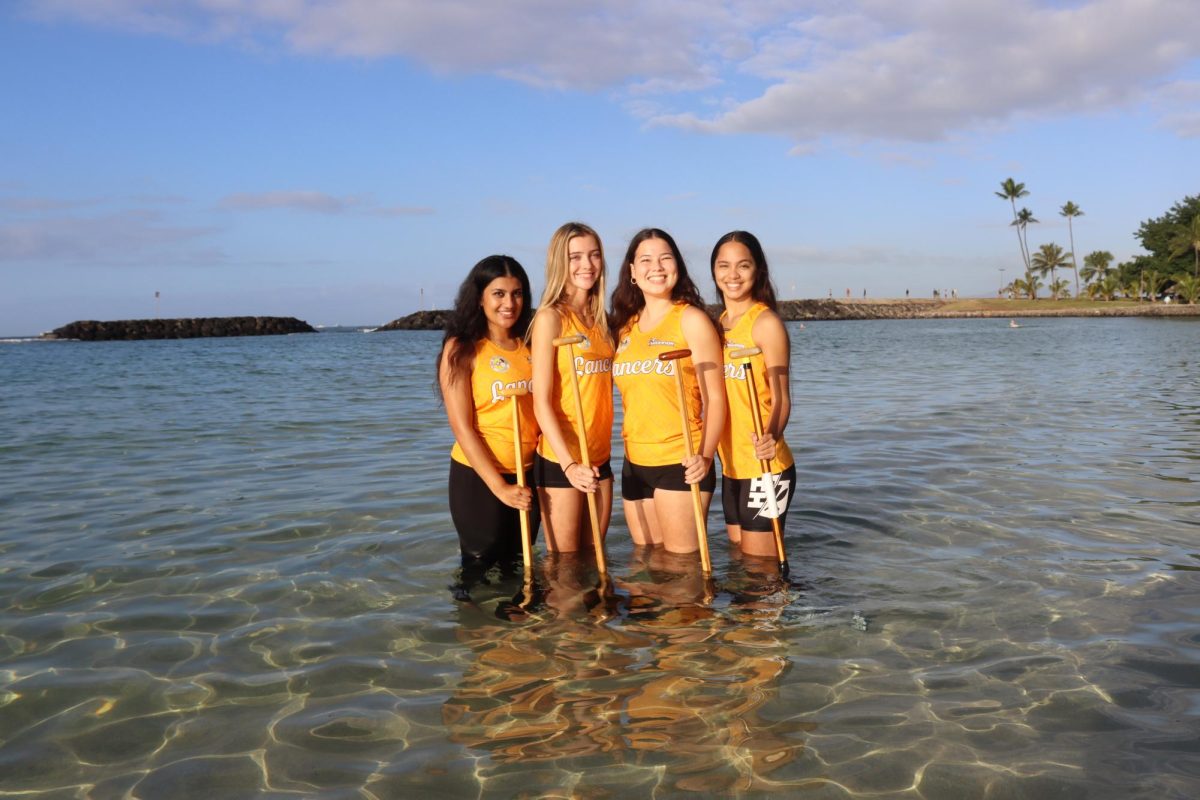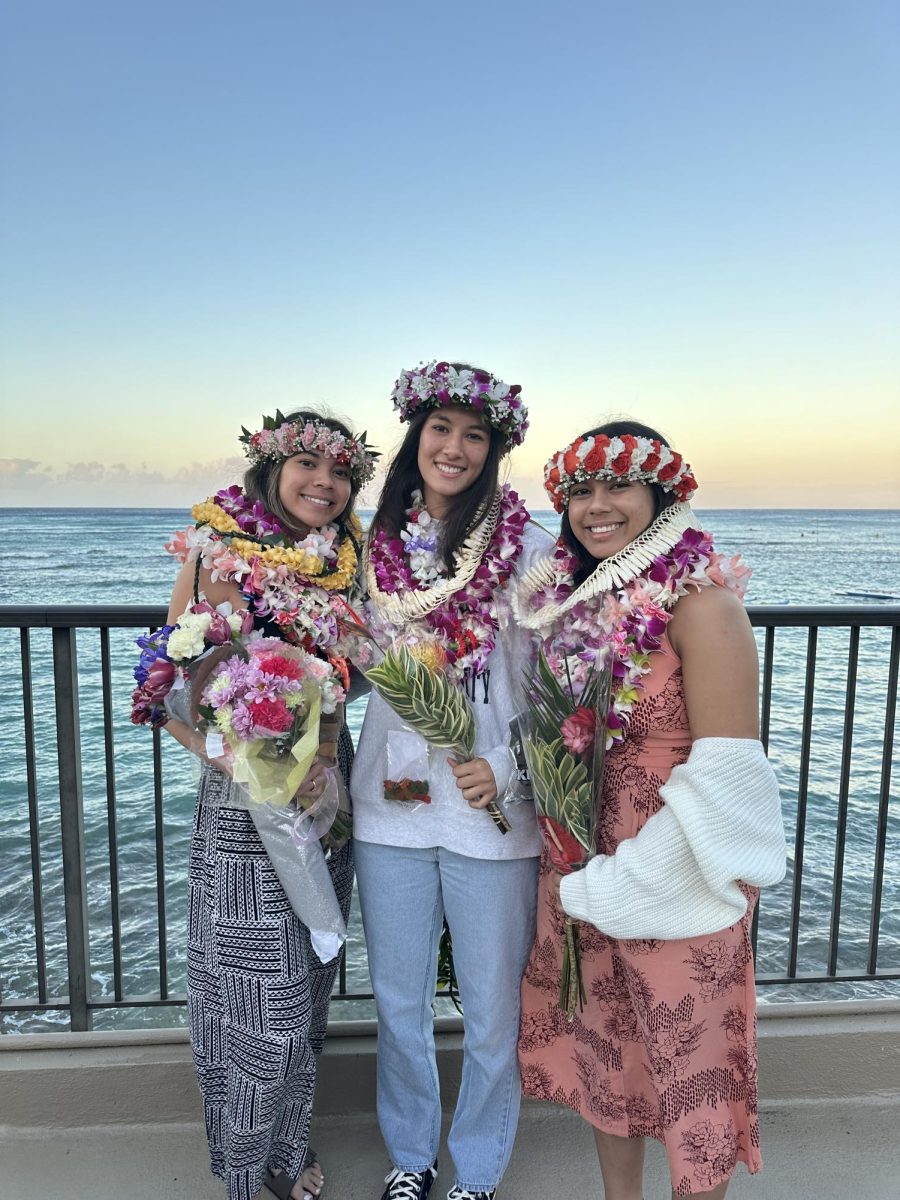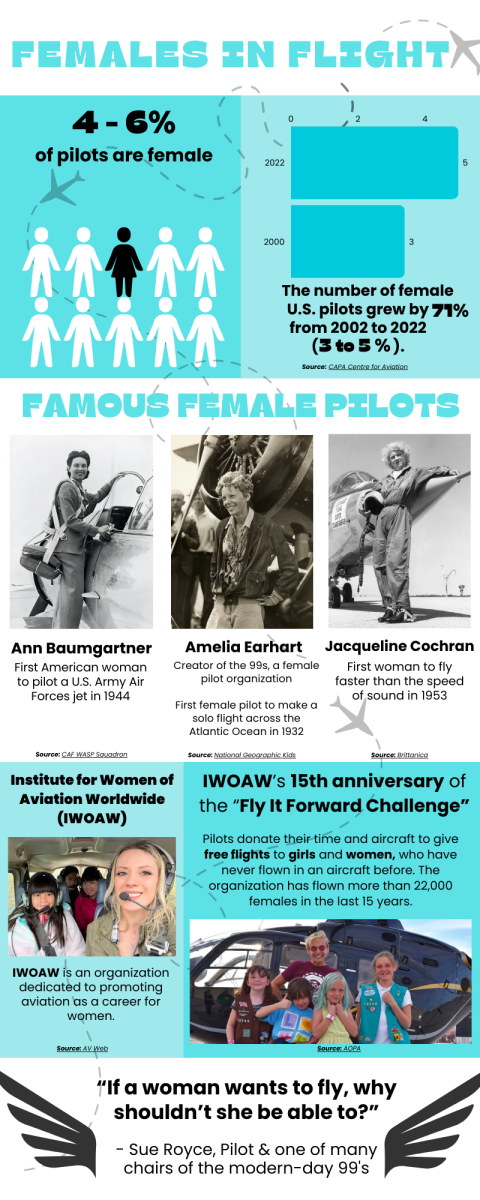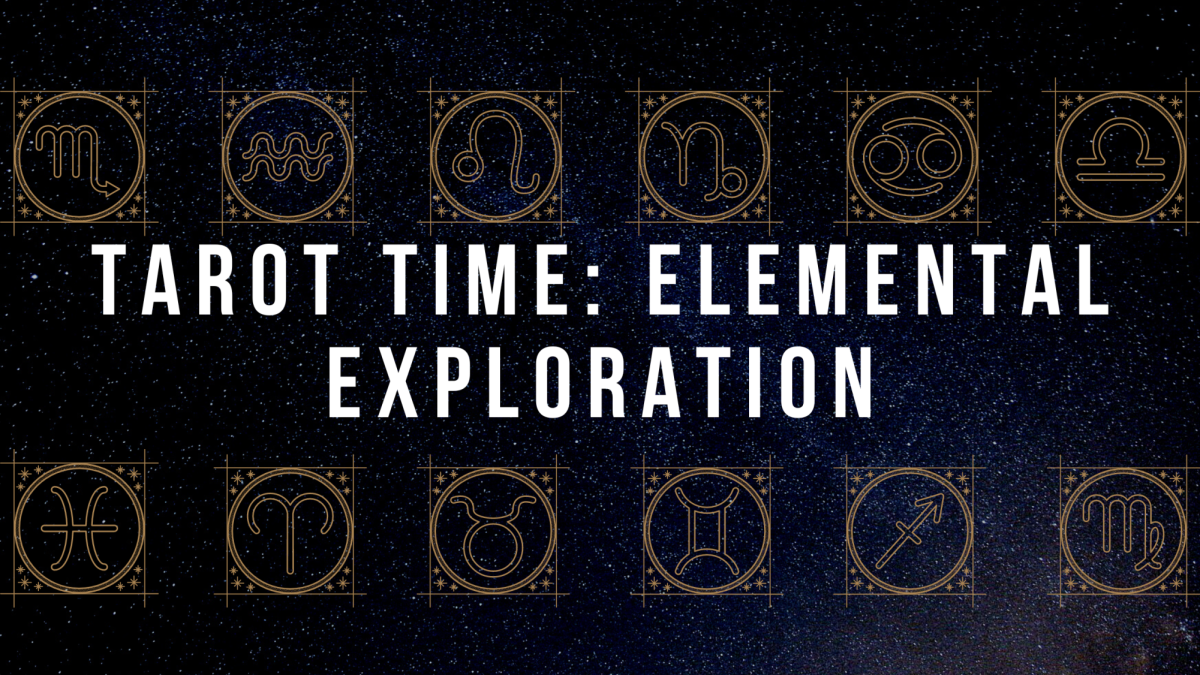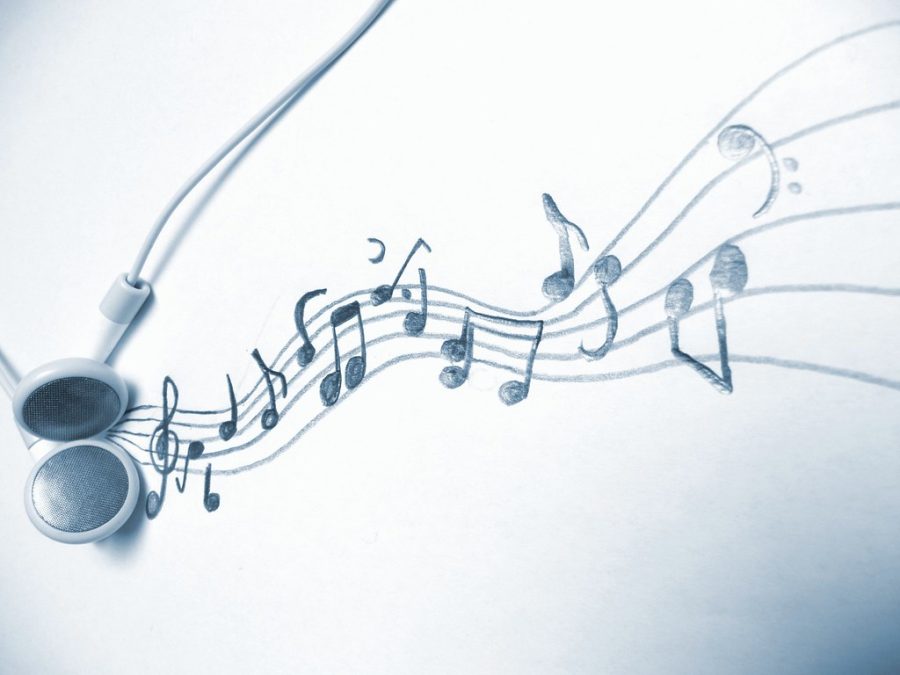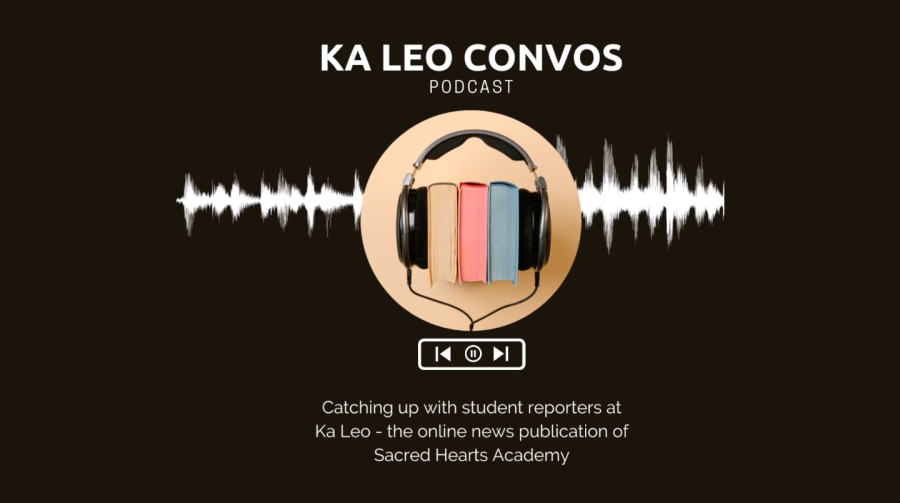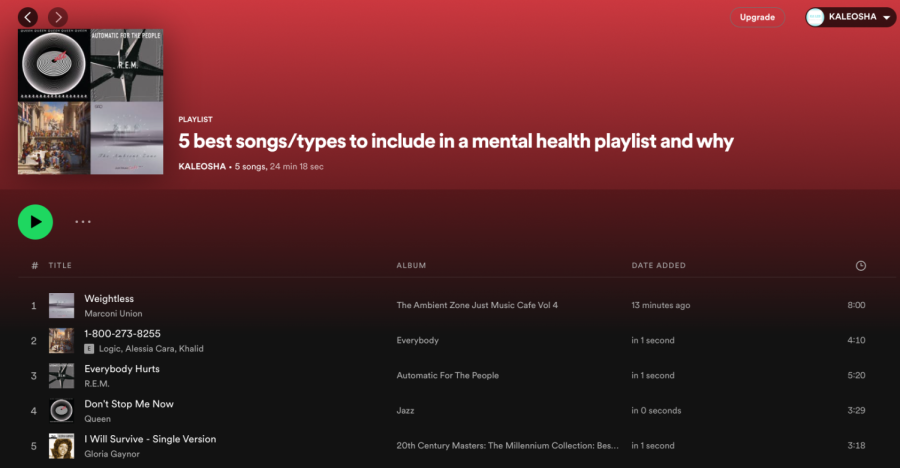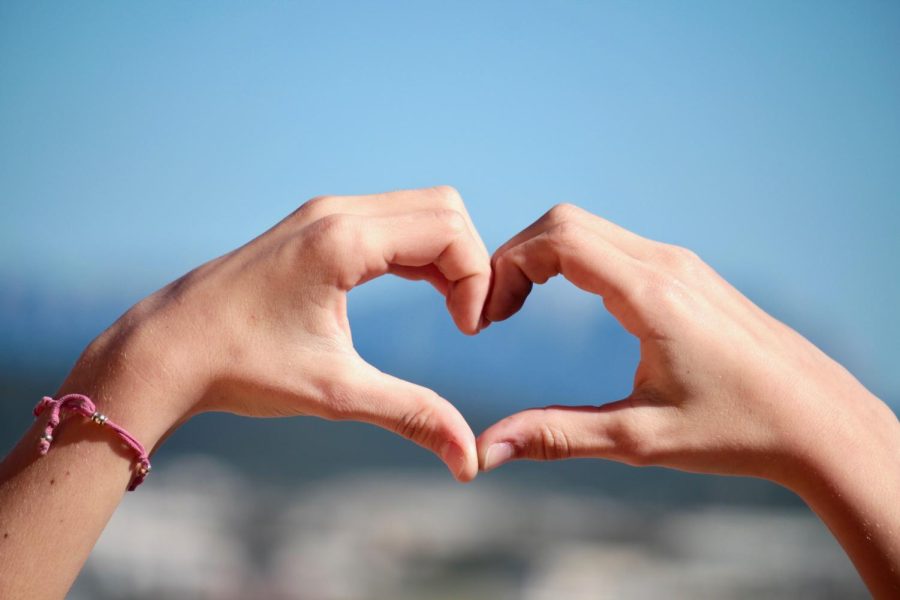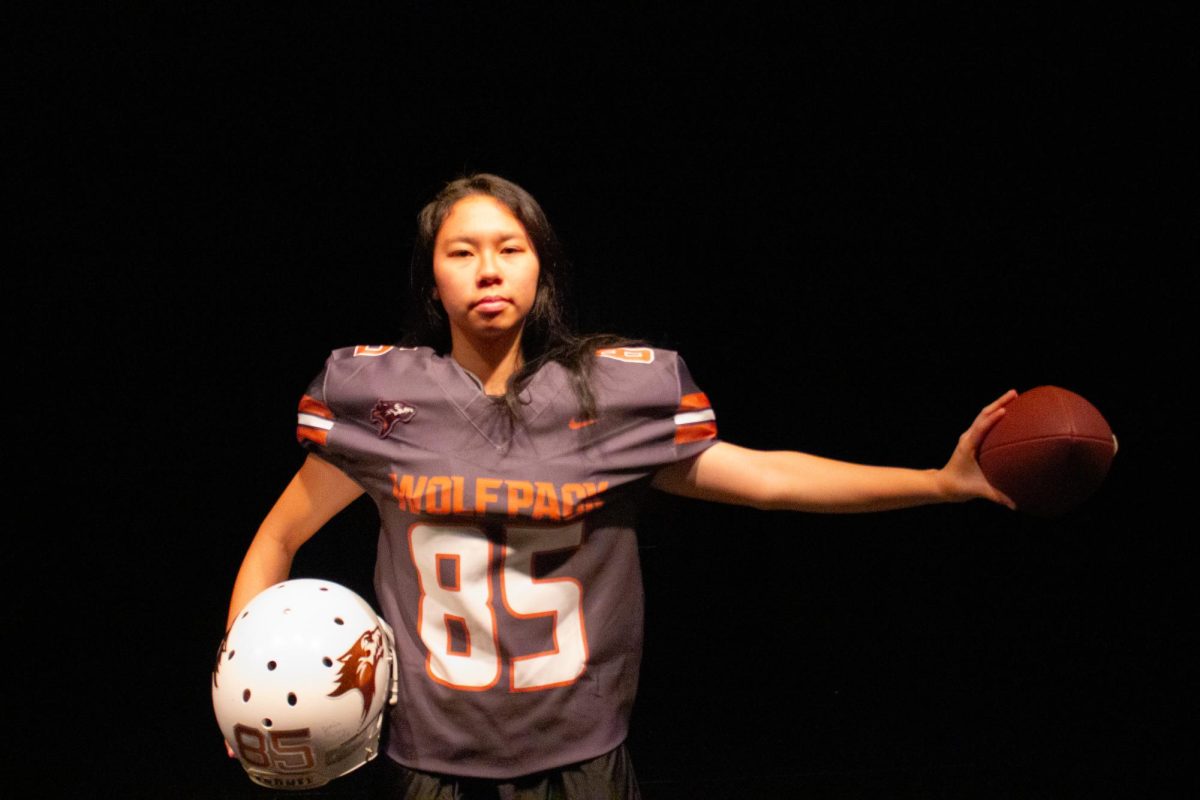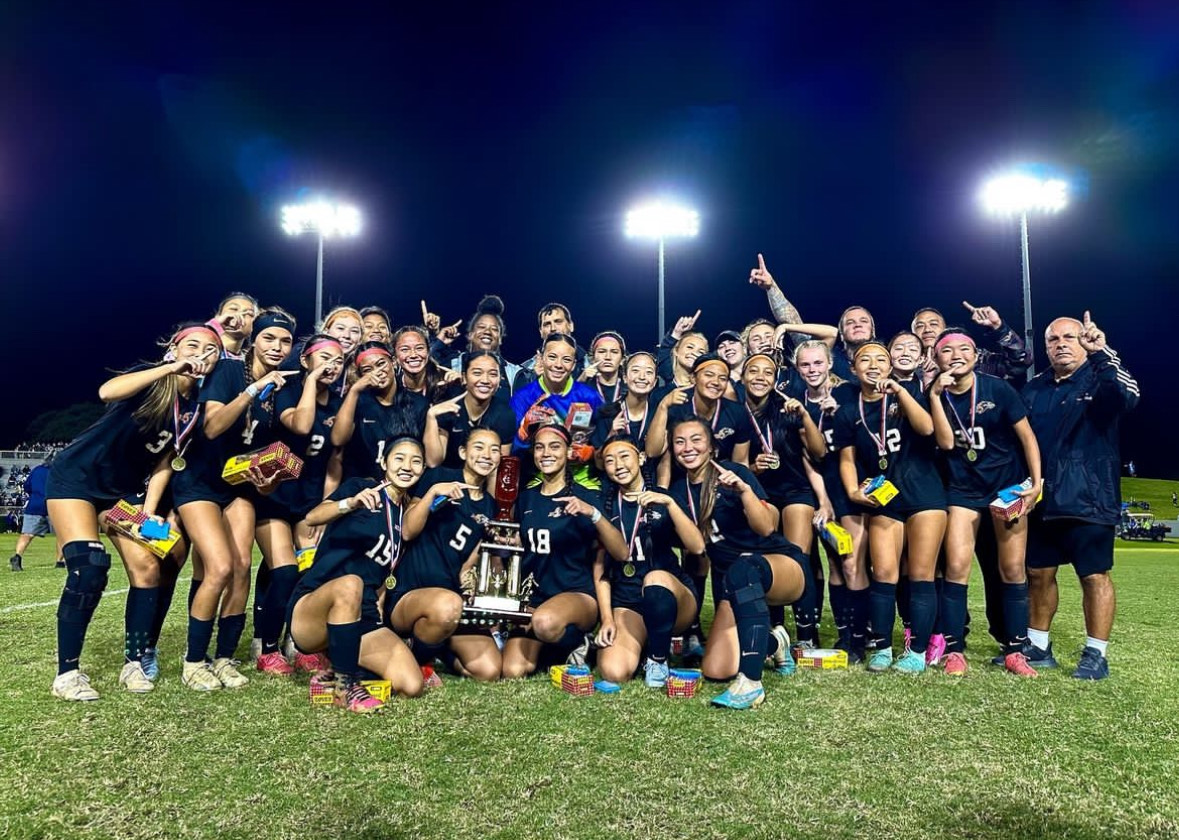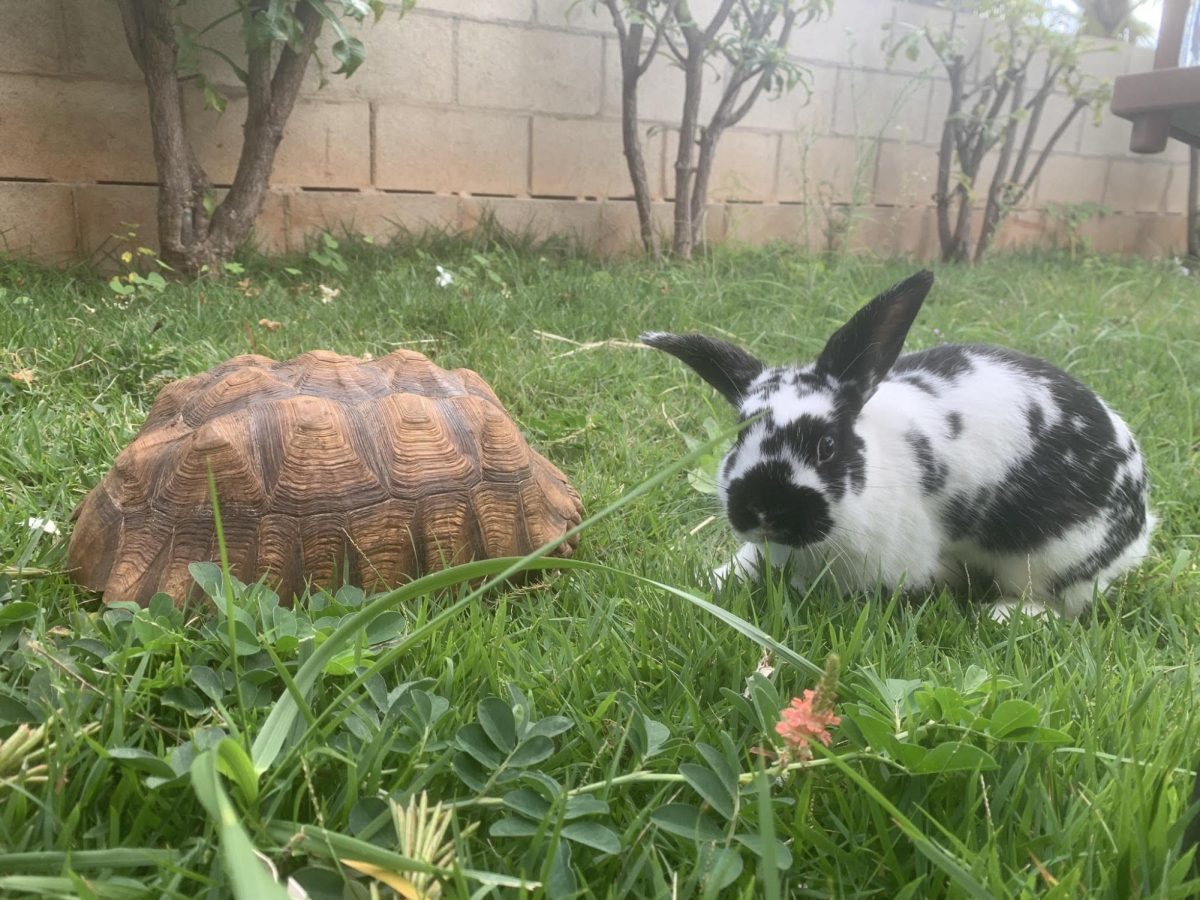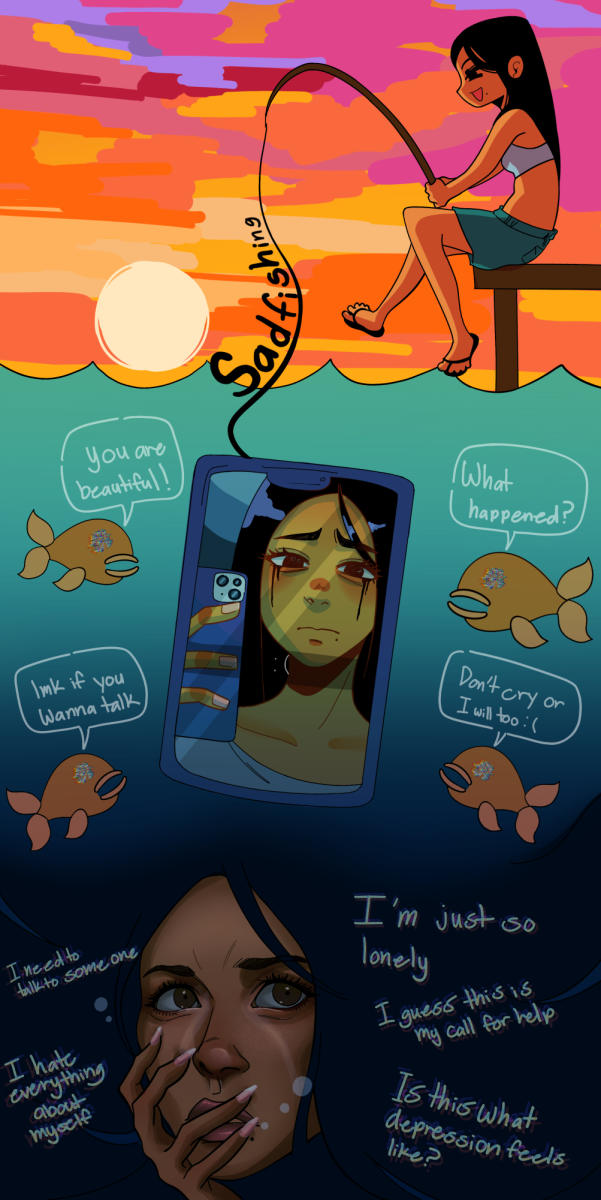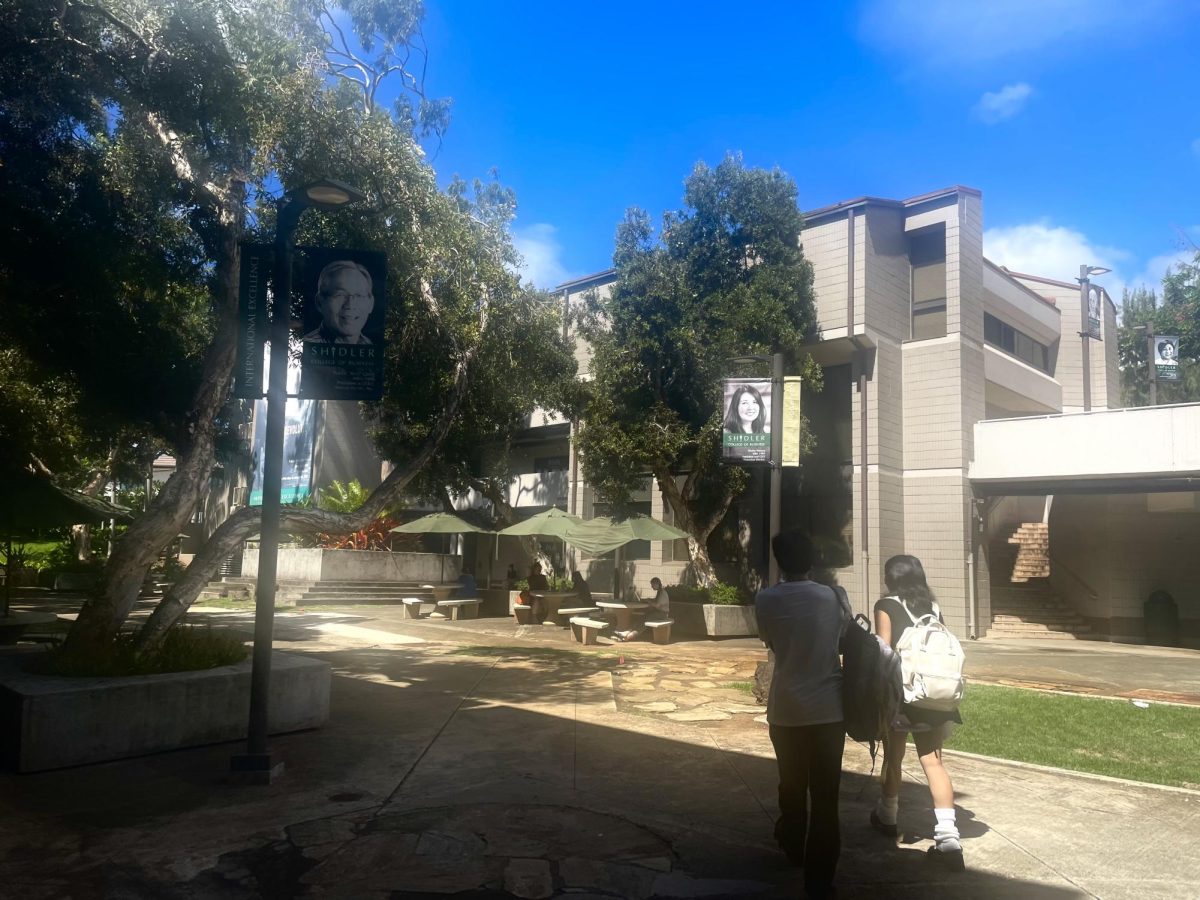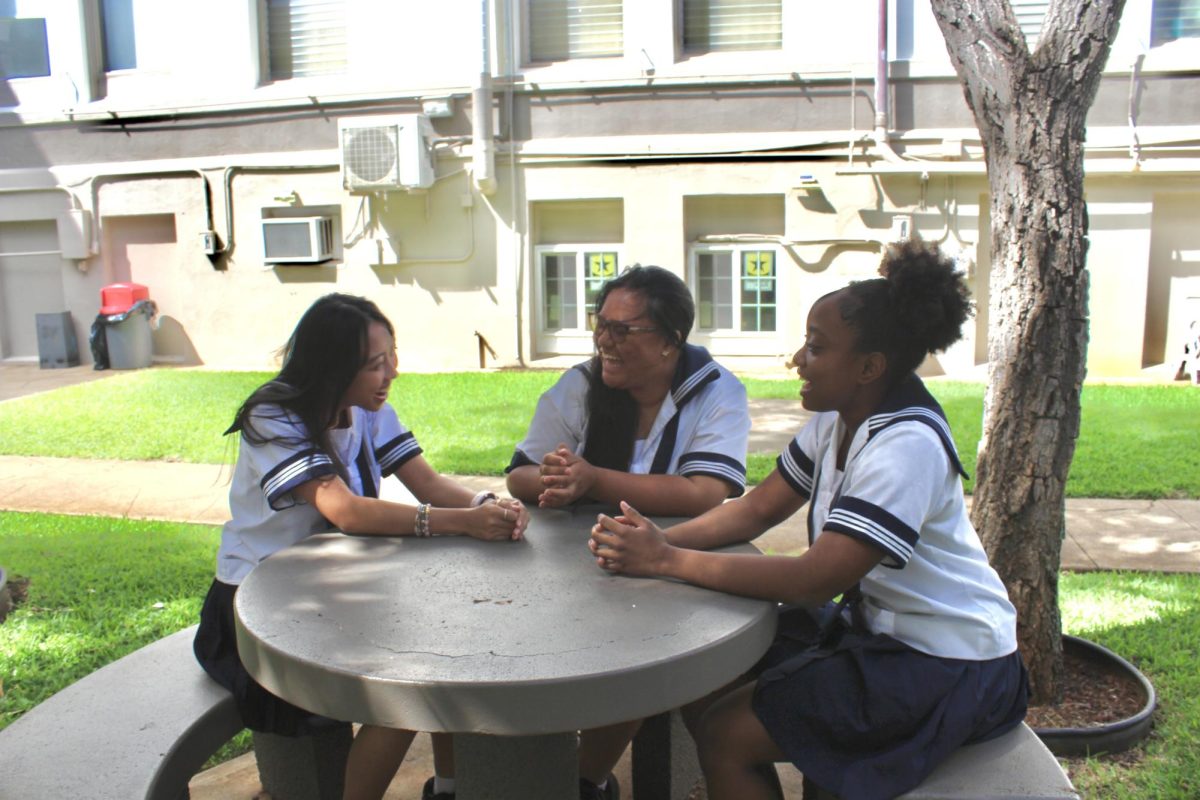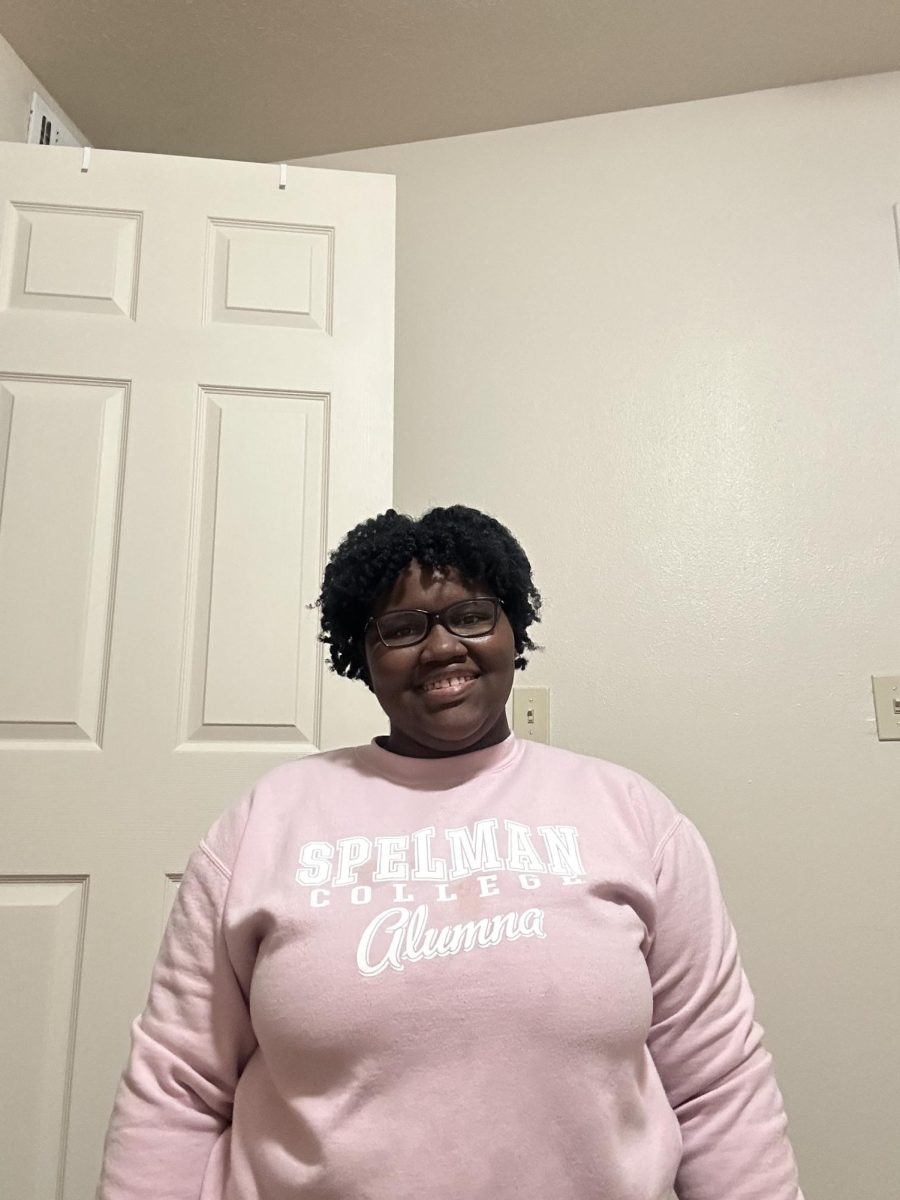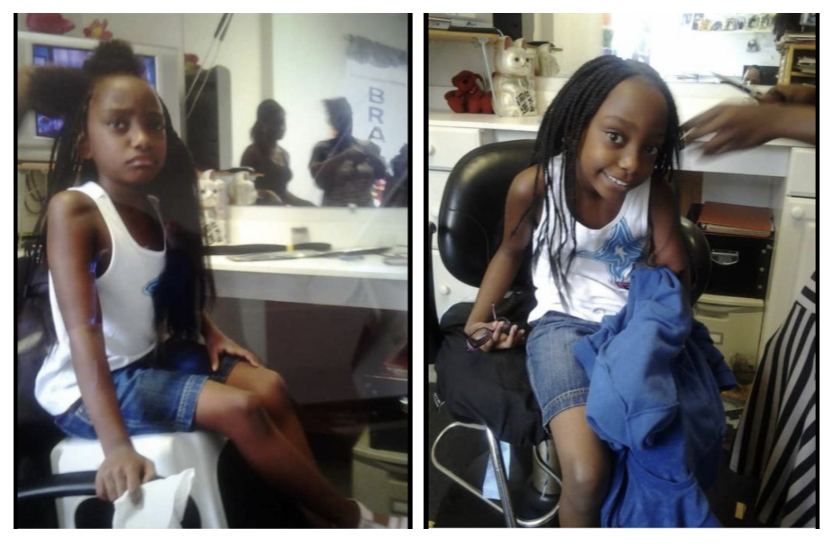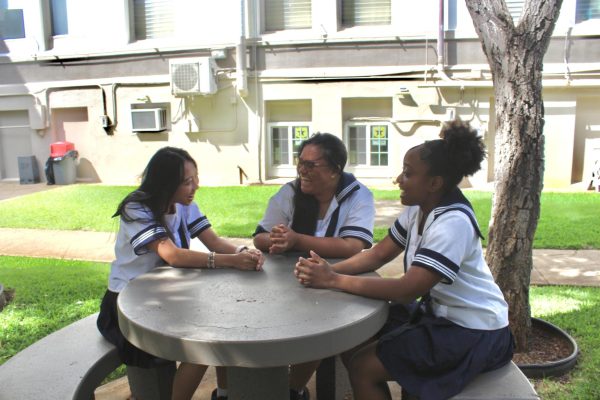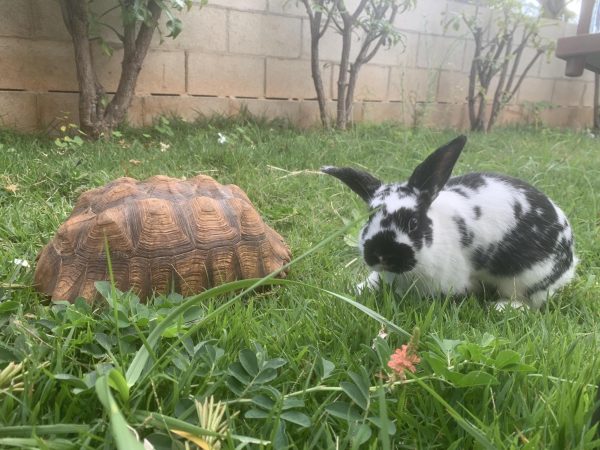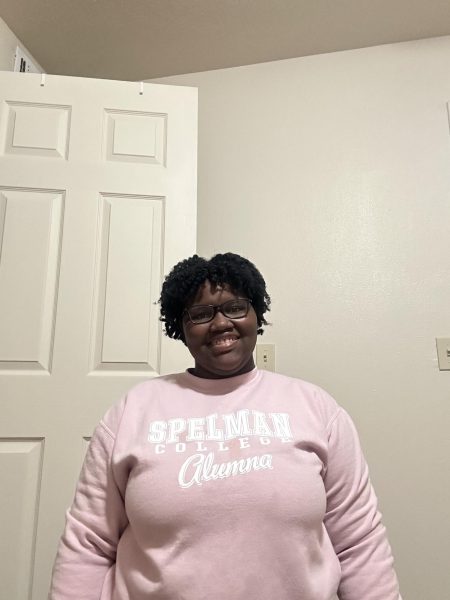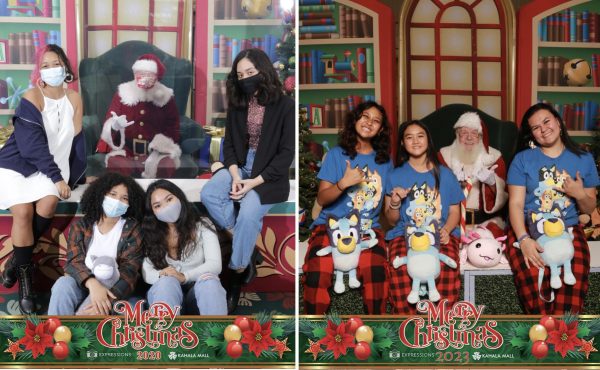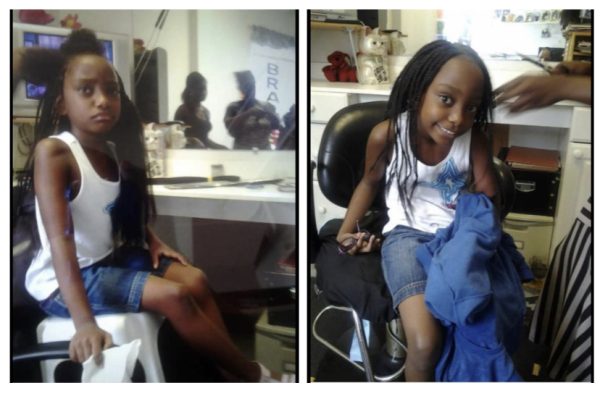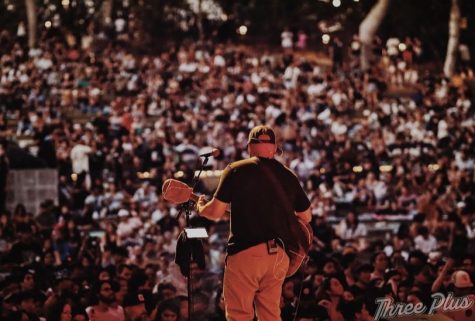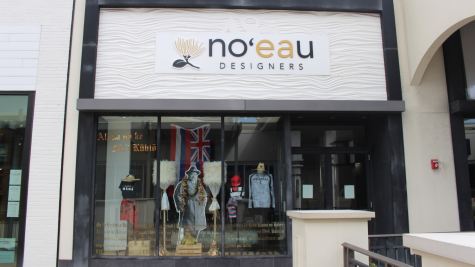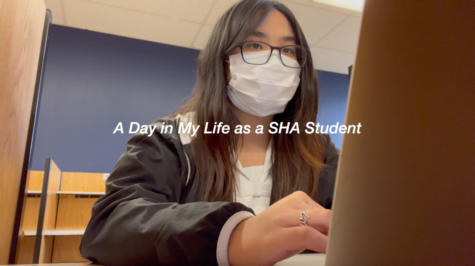Diving into real-world journalism with the IUCN Congress
[slideshow_deploy id=’11799′]
As I ran through the back of Makiki Valley, jumping over rocks and fallen leaves, dodging puddles of mud, it hit me.
I was completely surrounded by nature, on my way up the trail to what would be the biggest interview of my high school journalism career. The heavy tripod I slung over my shoulder and the pools of sweat forming underneath my shirt didn’t seem to bother me.
I was on that journalism adrenaline rush.
I was also about to interview U.S. Secretary of the Interior Sally Jewell, who oversees national parks and other public lands. PBS Hawaii selected our school to cover the 2016 International Union for Conservation of Nature (IUCN) World Conservation Congress, which took place this month at the Hawaii State Convention Center. Part of the assignment was filming a youth conservation group restoring native plants alongside Sec. Jewell.
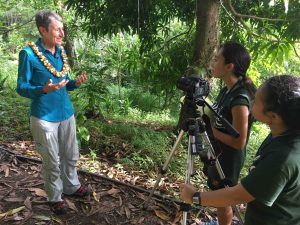
As I took the last lunge up the forest slope, I saw that I was just in time. We were up next in the line of reporters waiting to interview the secretary. While rushing to set up the equipment, I chuckled to myself; this was certainly not what I had envisioned when preparing for this interview a few weeks prior.
The air-conditioned room I assumed we’d be interviewing her in had been replaced with red ants, humidity and surprise rain flurries. Even finding a flat surface to level the tripod proved challenging, but somehow, we made do. After all, nature was the story, and what better way to talk about it than in nature itself?
As it turns out, that was the easy part. After a second shoot at the Hawaii Convention Center the following day, we had a four-day turnaround to script, edit and produce the video news story. Typically, PBS Hawaii gives participating schools two months to complete a story. However, our video was scheduled to play at the IUCN Congress and on PBS Hawaii later that week. It wasn’t until then that I felt the pressure, something that professional journalists face on a day-to-day basis.
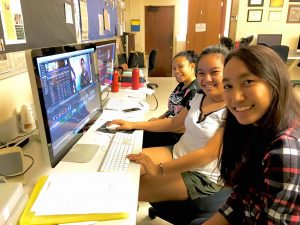

As the only school selected to cover such an important event, it was more than just an honor; it was an opportunity to experience what it meant to be a journalist beyond the classroom.
The IUCN story was my first “out in the field” experience. When I produced previous stories for PBS Hawaii’s “Hiki No” program, everything from the interviews to the filming were completed at school. However, with the IUCN assignment, I got more than what I had hoped for: experience. And lots of it. From interviewing a government official to scripting an on-camera stand-up on the fly, the assignment definitely added a few notches to my reporter’s belt.
Witnessing the IUCN Congress firsthand not only sculpted my definition of what it meant to be a student journalist but also a steward of conservation for the next generation. I learned that caring for the land is a responsibility of all who live upon it. I also learned how vital this mindset is to the survival of both the natural world and the human race.
But mostly, I was inspired by the young adults I shadowed throughout our coverage. To them, their mission towards conservation meant making changes now—not later. It meant doing something for not only themselves but also for their ancestors and their children to come. This was youth conservation at its core.
I’ve realized that there are so many different opportunities to tell a great story as a journalist. Some require stepping out into the elements of real-world journalism, while others require nothing but simply being a good listener. In my case, the opportunity to cover the IUCN Congress required a bit of both and was, most definitely, a story in itself; it’s one that I will take with me, as I journey through the remainder of my career on the high school newspaper, and into the world of college reporting at the University of Hawaii at Manoa.
This is our team’s finished IUCN Congress news story. It aired at the Hawaii Convention Center during the conference, as well as on PBS Hawaii.
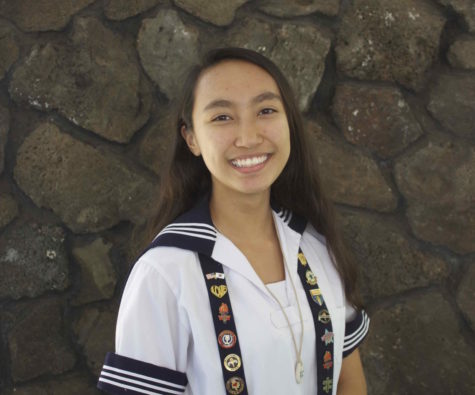

Kailanianna Ablog is a current senior at Sacred Hearts Academy and a third-year Journalism student. She is the president of Korean Club, the Outreach Head...

